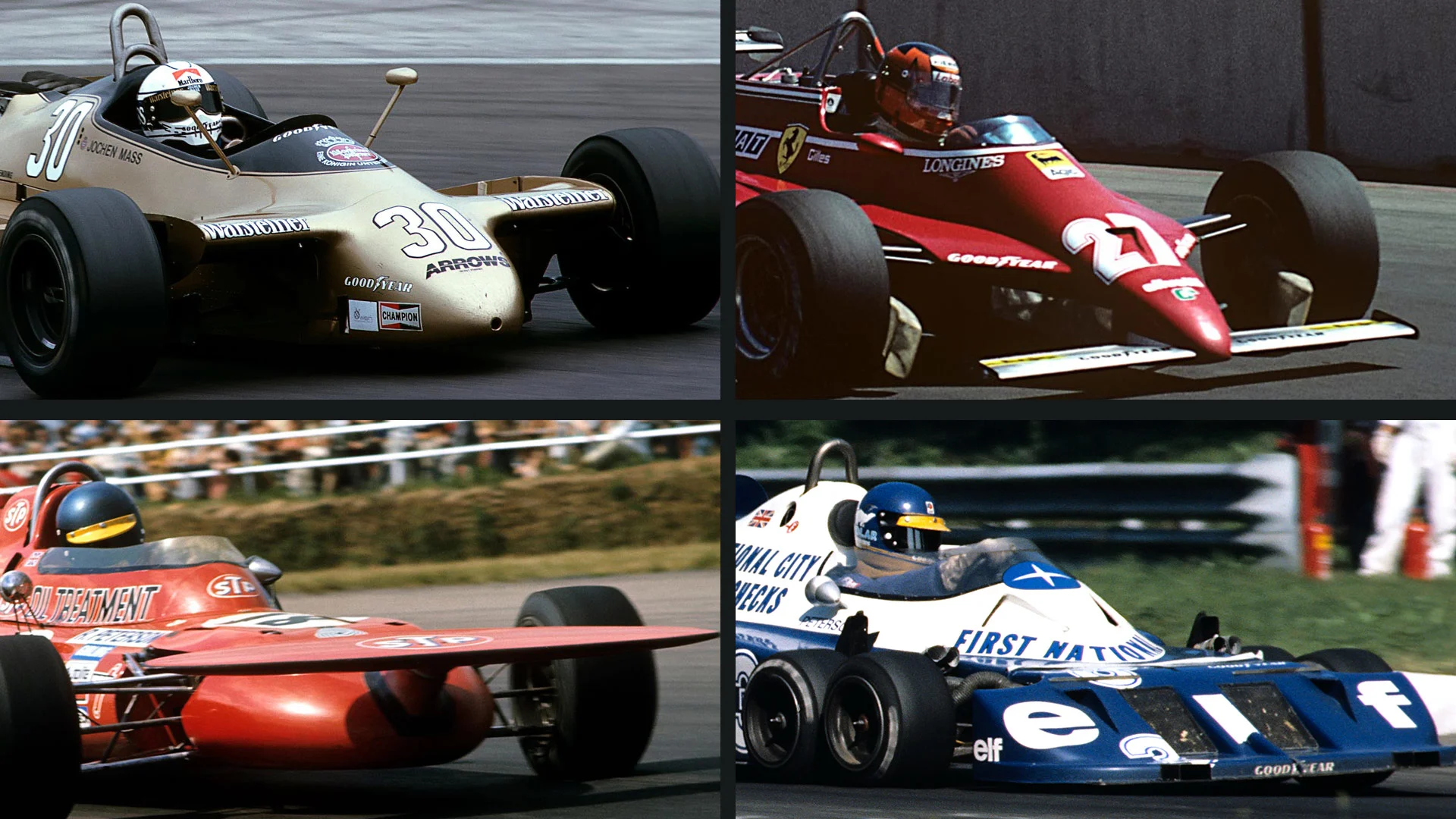While the cars on the current grid all conform to some basic design parameters set by the regulations, Formula 1 has seen some seriously odd machines since the world championship started back in 1950, so we've pored over the history books to find 10 of the most eccentric, ingenious and downright daring designs ever to grace the Grand Prix tracks of the world...
1. Ferguson P99 – 4WD frontrunner
The P99 might not look unique for a 1961 Formula 1 car, but it deserves a place in this list as the first four-wheel-drive F1 car to have won a race, and the last front-engined F1 car to have done so.
It was at the non-championship, highly prestigious 1961 Oulton Park International Gold Cup that Stirling Moss gave the P99 its moment in the spotlight; in damp conditions he won over Jack Brabham by 46 seconds.
READ MORE: From DAS to the double diffuser: 5 F1 innovations that caught rival teams napping
The P99 was the brainchild of Irish inventor and engineer Harry Ferguson, who wanted to show off the virtues of four-wheel-drive technology. Smaller and lighter parts helped offset the inevitable weight penalty that came with four driveshafts, while the engine was mounted at the front to bring the weight distribution closer to 50:50, and the driver sat slightly to the right to make room for the gearbox.
Moss’s 1961 victory proved that 4WD could have worked, but Harry Ferguson never got to see the fruits of his labour as he died in 1960. The technology gained more traction at the Indianapolis 500 than in F1 Grands Prix, although the likes of BRM, McLaren, Cosworth and Williams explored it before 4WD was banned from F1 in 1982…
2. Tyrrell P34 – F1's only six-wheeled winner
In 1982, the six-wheeled Williams FW08B signalled the end of six-wheeled Formula 1 cars when they were banned over safety and practicality grounds.
The likes of Ferrari and March had also dabbled with six-wheeled F1 cars but Tyrrell’s Project 34 remains the only example to have won a Formula 1 Grand Prix.
READ MORE: 6 fascinating facts about Tyrrell’s six-wheeler
The P34 came to be after designer Derek Gardner ran with the concept of 4WD in Formula 1 and realised that six wheels – the front four being much smaller – would allow for improved traction at the front and a narrower car, perhaps improving the handling and aerodynamics.
Turning almost on an axis, the P34 was particularly competitive at Monaco, but its only win came thanks to Jody Scheckter in the next round, the 1976 Swedish Grand Prix. Despite that, Scheckter was far from enamoured with the car and its handling.
Tyrrell’s sponsors Goodyear, on the other hand, were reported to be delighted with the six-wheeled car.
3. Arrows A2 – Flying without wings?
An F1 car without wings? The Arrows A2 was designed to be exactly that but – having been used for just half the 1979 season – it never did take off.
Tony Southgate’s astonishing design had the front wing mounted just above the front suspension and the rear wing between the rear wheels, with the aim being to channel air underneath the car at high speed and create downforce through ground effect – the same phenomenon that is used to generate downforce with the current era of F1 cars.
READ MORE: The Lotus 79, F1's ground effect marvel
Ground effect was already being used with great success but the idea to make the car into one big wing was one that was just being explored. Lotus tried it with the Lotus 80 but they and Mario Andretti gave up after just three entries in 1979.
Arrows persevered, but they tested the car far less extensively than Lotus, and when they entered the golden A2 in the second half of 1979, they discovered that it would porpoise heavily and did not handle all that well – despite the downforce being generated underneath the car.
Jochen Mass took two P6 finishes with the A2, but Arrows returned to normality in 1980 with the winged A3.
4. Brabham BT46B – Not everyone was a fan...
The Brabham BT46B took the ground effect concept to a new level as, in 1978, Gordon Murray hoped to blow the competition away with his fan car.
Lotus had kicked off the ground effect era with their 79, and Brabham needed to find a way to catch up. The trouble was Alfa Romeo’s huge, flat engine made it difficult to have a clear space underneath the BT46B and create the vacuum needed for effective ground effect.
PODCAST: Legendary designer Gordon Murray on revolutionising F1, his new supercar and more...
Enter the BT46B, which was fitted with a huge fan at the rear. Using power from the engine, the fan would suck air from below the car, creating a vacuum underneath it that was sealed by the side-skirts.
No movable aerodynamic devices were allowed in F1, so Brabham had to maintain that the fan was mainly used to cool the car. Teams protested before the 1978 Swedish Grand Prix which Niki Lauda won in the fan-powered Brabham, before team owner Bernie Ecclestone voluntarily withdrew the car under pressure from rivals.
5. Lotus 56B – The gas turbine on wheels
Lotus planned to have a platform that could compete both in the Indy 500 and Formula 1, and team boss Colin Chapman wanted it to be the 56 – a gas turbine-powered, wedged-shaped car without a gearbox or clutch…
Having almost won the Indy 500, the Lotus 56 was brought to Formula 1 in 1971 – and the engine itself is enough to make the 56B one of the weirdest F1 cars ever built.
PODCAST: Emerson Fittipaldi on flying the flag for Brazil and the loss of Ayrton Senna
Originally designed for helicopters – and even used in a train, the UAC TurboTrain – the Pratt & Whitney gas turbine was said to weigh half as much as Cosworth’s class-leading DFV but produce at least 50 bhp more.
The four-wheel-drive 56B was entered in three non-championship rounds and three Grands Prix, with a best finish of eighth at the hands of Emerson Fittipaldi in the 1971 Italian Grand Prix.
It wasn’t a success, but the wedge profile stayed and Lotus used it successfully with the (combustion-engined) 72.
6. March 711 – The 'Tea Tray'
Much like the Lotus 72, the March 711 carried side-mounted radiators and a huge platter-like rear wing – but where the March clearly differed was at the very front.
The huge front wing the car sported was duly nicknamed the ‘Tea Tray’. The oval-shaped aerofoil lay flat on a proboscis-like fitting on the nose of the car, a design that was penned by renowned engineer Frank Costin – who began his career with the De Havilland Aircraft Company.
READ MORE: Remembering Ronnie Peterson - F1's Super Swede
The 711’s profile was made more awkward by the bathtub-like enclosure around the driver (not uncommon in the ‘70s) and the clunky side inlets for the radiator. More peculiar perhaps was the airbox, which again gave the March 711 an almost ‘modular’ appearance. The intake would take various forms but the team would ultimately choose to lose the rear bodywork altogether.
When it came to results, Ronnie Peterson took the 711 to podiums in Monaco, at Silverstone, Monza and Ontario, as March managed fourth in the 1971 constructors’ standings.
7. Life L190 – W power
Italian constructor Life Racing Engines spent one season in Formula 1 and failed to pre-qualify for any of the 14 rounds they entered. Their L190 doesn’t look unusual – but what lies under its bodywork certainly is.
The team didn’t opt for a V8 engine, nor a V10 or V12, but a W12 engine; the engine bay had three banks of four cylinders each. Ex-Ferrari engineer Franco Rocchi swore by the compact ‘W’ layout that was supposed to offer equal power to a V12 but a smaller footprint.
READ MORE: How F1 looked in 1990
Unfortunately, the W12 offered little in the way of power and reliability. In pre-qualifying for the opening race of the 1990 season at Phoenix, the L190 qualified almost 40 seconds off pole position – yet it wasn’t last…
That dubious honour went to the Coloni C3B, which sported a Subaru flat-12 engine and put in a pre-qualifying time of 5m 15.010s, which made Life’s 2m 07.147s look rapid. Coloni ditched the boxer engine halfway through the 1991 campaign but Life threw in the towel before the end of the 1990 season.
8. Tyrrell 025 – X Wings
The Tyrrell 025 was the product of heavy development over the team’s 1996 car, but when it was unveiled in 1997 there seemed to be little change over the previous version. In fact, attention was drawn to a switch from Yamaha’s V10 to Ford’s V8, and the nose that sat high upon a simple front wing.
By the third round of the season, however, Tyrrell’s pursuit for downforce – in the face of regulations that mandated grooved tyres and a narrower track – took a strange turn as the car had sprouted wings from its sidepods.
READ MORE: Unlucky for some – 13 of F1’s most unfortunate records
Those wings, nicknamed ‘X Wings’, climbed higher than the car’s rear wing and produced extra downforce, which came in handy at street tracks such as Monaco where, incidentally, Tyrrell took their only points of the season with P5 thanks to Mika Salo.
Ferrari, Jordan, Prost and Sauber were among the other teams to follow suit, but the device was banned after the fourth round of the 1998 season amid safety concerns.
9. Ferrari 126C2 – Seeing double
Not a dodgy bit of image editing, but a genuine attempt by Ferrari to exploit a loophole in the 1982 Formula 1 regulations and fit two rear wings to the back of their 126C2 for the United States Grand Prix West at Long Beach.
To say that the 1982 season was fraught with tension would be an understatement; the opening round saw a drivers’ strike, and the political scrap between FISA and FOCA would rage on – as would the rivalry between Didier Pironi and Gilles Villeneuve.
READ MORE: Prost vs Senna, Mansell vs Piquet and more – F1's fiercest team mate rivalries
Williams and Brabham had also courted controversy by trying to flaunt minimum weight restrictions with a water-filled ballast tank that would deliberately leak and shed weight during the race. Ferrari, nor ruling body FISA, would buy Williams’ reasoning of ‘water-cooled brakes’.
The Scuderia then thought of their own loophole for the race at Long Beach: the rules dictated how wide wings could be, but not how many wings could be fitted to a car. So, they raced with two rear wings – but the ruling body was not impressed, and Villeneuve’s third place was struck off.
10. Ligier JS5 – The Teapot
It’s immediately clear why Ligier’s first Formula 1 entry, the JS5 – JS being a tribute to fallen F1 driver Jo Schlesser, who was a close friend of Guy Ligier – is regarded as an oddity.
That high airbox earned the Matra V12-powered JS5 the ‘teapot’ nickname, although the distinctive blue paint job also meant the car bore a striking resemblance to a Smurf.
READ MORE: F1’s 'one-win wonders' - how many do you remember?
High airboxes were common on cars in the 1970s, with the Maki F101, Shadow DN5 and McLaren M23 all fine examples of this trend to stretch the airbox to the sky in order to feed more air to the engine.
With the bulbous air intake, Jacques Laffite took the JS5 to P4 in the 1976 US Grand Prix West. Tall airboxes were banned from Belgium onwards, and it was there that Ligier earned their first F1 podium with further success in Austria and Italy. The JS5 was certainly no laughing stock.
Next Up
Related Articles
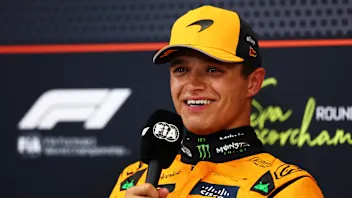 Norris happy to ‘get back to the top’ with Spa poleJuly 26, 2025
Norris happy to ‘get back to the top’ with Spa poleJuly 26, 2025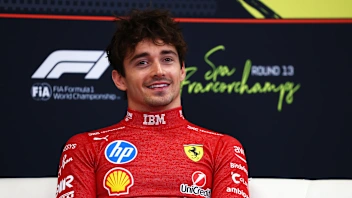 Leclerc on ‘high pressure’ from Verstappen in Spa3 hours ago
Leclerc on ‘high pressure’ from Verstappen in Spa3 hours ago.webp) Strategy GuideWhat are the tactical options for the Belgian GP?July 26, 2025
Strategy GuideWhat are the tactical options for the Belgian GP?July 26, 2025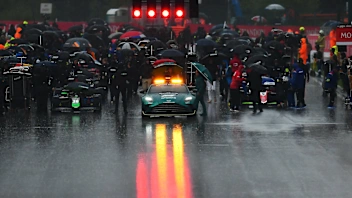 F3Feature Race red-flagged after adverse weather at Spa13 hours ago
F3Feature Race red-flagged after adverse weather at Spa13 hours ago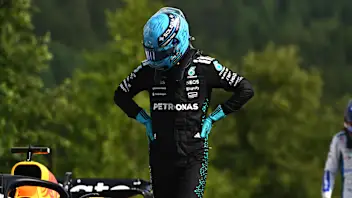 Russell expresses concern as Mercedes take 'a big step backwards'July 26, 2025
Russell expresses concern as Mercedes take 'a big step backwards'July 26, 2025 HighlightsWatch the best moments as Piastri wins in Belgium5 hours ago
HighlightsWatch the best moments as Piastri wins in Belgium5 hours ago

